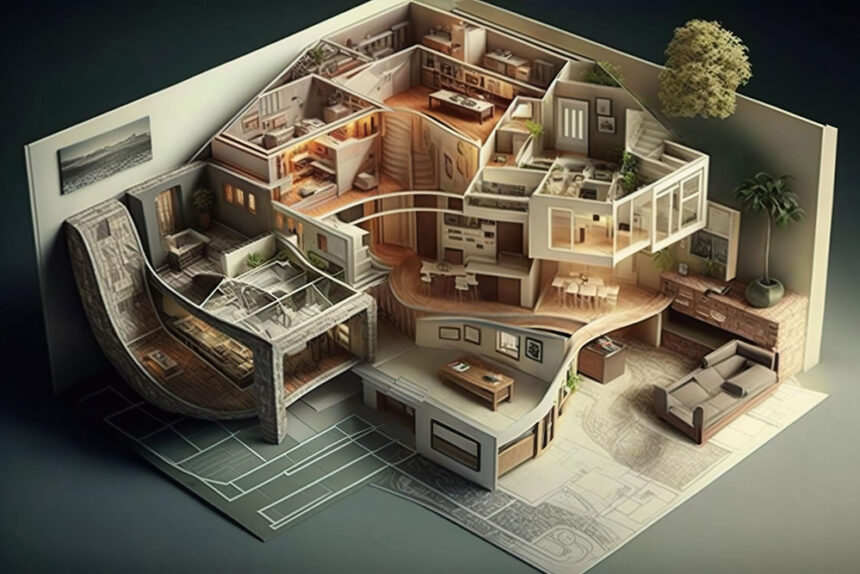In the dynamic world of architecture, the journey from conceptualisation to physical reality is a complex process that requires precision, innovation, and effective tools. Among these, plotters play an essential role, helping architects transform intricate designs into accurate, life-sized blueprints essential for construction. This blog explores the integral role of various types of plotters in modern architectural design, acting as a bridge from creative ideas to tangible structures.
Understanding Plotters in Architecture
These are specialised, large-scale printers that are indispensable for producing architectural drawings, technical schematics, and maps. Unlike standard printers, plotters can manage a wide array of materials and sizes, making them perfect for the large-scale demands of architectural plans. They achieve this by moving a pen across the surface of a material, ensuring every line, curve, and detail is precisely rendered. This method supports high-fidelity output, which is crucial for the detailed nature of architectural blueprints.
Enhancing Design Accuracy
In architecture, accuracy is not just a necessity but a strict requirement, as even minor errors can lead to significant problems during construction. These printers ensure unparalleled precision in translating design software outputs into physical copies, maintaining the integrity of every design element. This high level of accuracy helps architects avoid costly mistakes and maintain compliance with specific regulatory standards, which is especially important in projects with complex structural requirements.
Speeding Up the Revision Process
The architectural design process is inherently iterative, often requiring numerous adjustments before final approval. Plotters excel in this area by enabling quick production of updated plans, thus facilitating a rapid response to feedback or changes in project specifications. This efficiency is crucial for maintaining project timelines and allows architects to explore various design options without significant delays. Faster revisions mean quicker progression from design phases to actual construction, keeping projects on schedule.
Facilitating Collaborative Efforts
Modern architectural projects involve a variety of stakeholders, including designers, engineers, contractors, and clients. Plotters enhance collaboration by providing detailed, tangible prints that can be easily shared and reviewed during meetings. The clarity and detail offered by plotter outputs ensure that all team members have a precise understanding of the design and can provide informed feedback, which is essential for the success of any collaborative architectural project.
Customisation at Its Best
Plotters offer extensive customisation options that cater to the diverse needs of architectural projects. Architects can select different output sizes, paper types, and ink settings depending on each project’s requirements. This adaptability allows the production of everything from detailed presentation drawings to durable construction documents, all from the same device. Such versatility optimises the design process and helps present ideas in various formats suitable for different stages of the project lifecycle.
Additionally, advanced plotters can adjust resolution and colour settings to match specific design details, ensuring that every visual element is presented with maximum impact. These capabilities are particularly valuable in client presentations and regulatory submissions where visual accuracy and detail are paramount.
Supporting Sustainability in Architecture
The shift towards sustainable practices in architecture isn’t limited to the use of eco-friendly building materials but also includes the processes and technologies used in design and planning. Modern plotters contribute to this by optimising ink usage and reducing paper waste, which are important aspects of sustainable office practices. Furthermore, the ability to produce precise quantities of needed documents minimises excess production, aligning with the goals of reducing environmental impact within the architectural profession.
The Impact on Client Engagement
Architects often face the challenge of presenting complex designs in a way that is accessible to clients. These printers help by producing clear and detailed drawings that facilitate client understanding and involvement in the design process. This visual communication is vital for aligning client expectations with the project outcomes, ensuring client satisfaction, and reducing the likelihood of costly changes during construction phases.
Future Trends in Plotting Technology
As technology evolves, so does the functionality of various types of plotters. Future developments may include greater integration with 3D printing technologies, allowing architects to not only print 2D blueprints but also create detailed 3D models directly from their designs. Furthermore, advancements in connectivity and cloud-based services are expected to enhance collaboration by allowing real-time updates and remote access to plotter printer outputs, streamlining the design process even further.
Plotters hold a critical place in the architecture industry, transforming digital designs into precise physical documents that guide the construction of every type of building. These printers are essential in bringing architectural visions to life by providing accuracy, efficiency, and flexibility to meet diverse project demands. As architectural practices continue to evolve, the role of plotters will likely expand, incorporating new technologies that further enhance the design and construction process.






